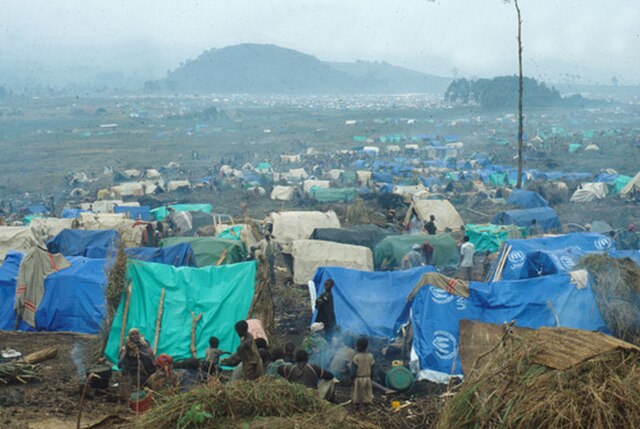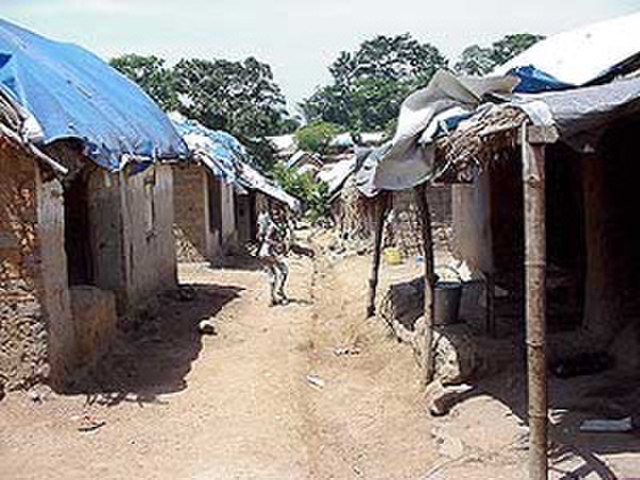The Zaatari refugee camp is a refugee camp in Jordan, located 10 kilometres (6.2 mi) east of Mafraq, which has gradually evolved into a permanent settlement; it is the world's largest camp for Syrian refugees. It was first opened on 28 July 2012 to host Syrians fleeing the violence in the ongoing Syrian War that erupted in March 2011. It is connected to the road network by a short road which leads to Highway 10.
Zaatari refugee camp
A bakery shop made by the residents of Al-Za'tari camp for Syrian refugees in Jordan. Many Syrian refugees have started their businesses in the camp for living, which created a popular market in the camp. (By/ Mustafa Bader)
Zaatari refugee camp
USAID personnel visit the camp
A refugee camp is a temporary settlement built to receive refugees and people in refugee-like situations. Refugee camps usually accommodate displaced people who have fled their home country, but camps are also made for internally displaced people. Usually, refugees seek asylum after they have escaped war in their home countries, but some camps also house environmental and economic migrants. Camps with over a hundred thousand people are common, but as of 2012, the average-sized camp housed around 11,400. They are usually built and run by a government, the United Nations, international organizations, or non-governmental organization. Unofficial refugee camps, such as Idomeni in Greece or the Calais jungle in France, are where refugees are largely left without the support of governments or international organizations.
Kiziba refugee camp in the west of Rwanda, 2014
Refugee camp in Beirut, c. 1920–25
Refugee camp (located in present-day eastern Congo-Kinshasa) for Rwandans following the Rwandan genocide of 1994
A camp in Guinea for refugees from Sierra Leone








